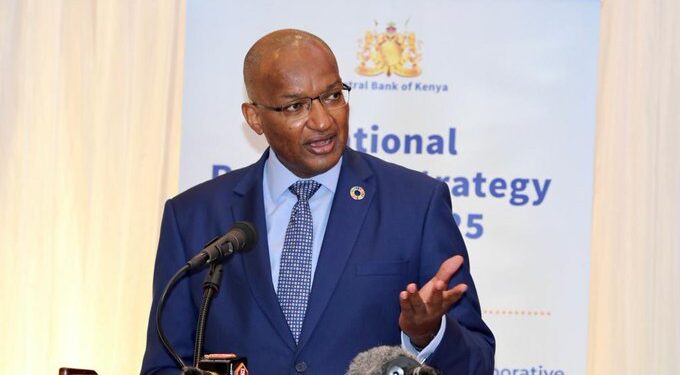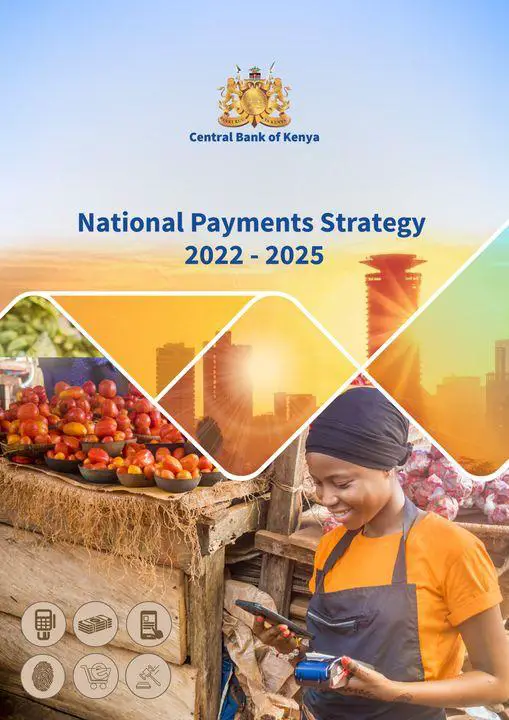- NPS aims at supporting CBK’s role in facilitating economic activities and livelihoods
- NPS is to support Kenya’s shift to a digital and inclusive and 24/7 economy
- The Strategy will also be the basis for consolidating Kenya’s digital payments and innovations
The Central Bank of Kenya (CBK) has developed the National Payment Strategy (NPS) 2022-2025 to formulate and implement policies that best promote the establishment, regulation and supervision of efficient and effective payment systems in Kenya, clearing and settlement systems anchored on CBK’s establishment in the Constitution of Kenya, 2010.
Kenyan payment systems have undergone significant changes and shifts over time. From the modernisation of the domestic payments infrastructure through the deployment of the Real Time Gross Settlement (RTGS) system in 2005 to the launch of mobile money services in 2007, to the subsequent improvements implemented to strengthen and automate clearing systems, Kenya has experienced significant developments in this direction.
Read: Central Bank of Kenya firm on Cryptocurrencies ban
The NPS aims at supporting CBK’s role in facilitating economic activities, livelihoods and its journey of becoming A World-Class Modern Central Bank.

The first National Payments Strategy implemented in 2004 through to 2008, was aimed at addressing challenges across risks due to the absence of a real-time settlement system, limited trust in payment instruments such as high-value cheques and an under-developed policy, legal and regulatory framework.
The NPS is motivated by a desire to meet the diverse needs of the Kenyan people and its economy and support our nation’s ambition for a digital, inclusive and 24/7 economy. The Strategy will also be the basis for consolidating and extending Kenya’s global leadership in digital payments and innovation. Finally, the Strategy will provide the overarching policy framework that will guide the work to strengthen the NPS legal and regulatory framework.
Payments facilitate economic activities among individuals, households and businesses.
The vision of the National Payment System in Kenya.
The National Payments Strategy 2022 – 2025 sets out the vision and Strategic Initiatives for the payments ecosystem in Kenya for the next four years, in line with the constitution of Kenya.
The vision of the National Payment Strategy: Create a secure, fast, efficient and collaborative payments system that supports financial inclusion and innovations that benefit all Kenyans.
The vision and the accompanying Strategic Initiatives will be the foundation for developing Kenya’s payments ecosystem and industry.
The Central Bank of Kenya seeks to operate within a strategy that works under trust, security, usefulness, choice and innovation principles. The CBK says that all payment methods should be anchored to the principles outlined in this Strategy, where citizens trust that their monetary value can be safely and securely held and transferred and that this is done in an environment underpinned by customer-centricity value-adding innovation.
Principles of the National Payment Strategy.
- Trust – An NPS system based on guaranteeing that payments will be made and received in a timely and reliable manner.
- Security – A resilient NPS safeguards all payments and channels in an increasingly digital world.
- Usefulness – A system that meets customer needs, especially among the financially excluded, in a cost-effective manner.
- Choice – Availability of feasible options resulting from collaboration among different players in the payments ecosystem.
- Innovation – An ecosystem that produces customer-centric and value-adding solutions which also compete on the global stag
In launching this Strategy, the CBK is re-affirming its commitment to continue creating the enabling environment to usher in the new chapter of Kenya’s payments journey, enhance our participation at the regional and global stage, and realise the vision of the National Payment Strategy in accordance with the constitution of Kenya.
Read: Central Bank of Kenya governor Patrick Njoroge feted
The NPS will enable payments to support broader Government initiatives to integrate digital technologies in the economy and boost its long-term development aspirations. These include the Vision 2030 and the third Medium Term Plan (2018 – 2022), the Big Four Agenda, the Digital Economy Blueprint, and the envisaged Digital Finance Policy Framework developed by the National Treasury and Planning. Further, the Strategy seeks to build on CBK interventions facilitating mobile payments during the COVID-19 pandemic.
Objectives of Kenya’s National Payment System

- To support a payments system that meets the diverse needs of customers, especially concerning financial inclusion and shared prosperity.
- To enhance the safety and security of the payments system by adopting relevant industry and global standards.
- To support an ecosystem anchored on collaboration that produces customer-centric and world-leading innovations.
- To create a supportive policy, legal and regulatory framework robustly enforced across existing and emerging players in the payments ecosystem.
The global payment landscape has evolved since Covid-19, and the national payment system needs to adapt to the changes. The emergence of blockchain and distributed ledger technologies have necessitated the innovation and design of new payment solutions. The result is the emergence of innovations such as cryptocurrencies and new forms of digital money like Central Bank Digital Currencies (CDBCs) currently being explored by central banks, including the Central Bank of Kenya across the globe. The NPS will improve the payment system in line with the constitution of Kenya.
Read: Nigeria: Central Bank licenses lending apps to regulate borrowing











